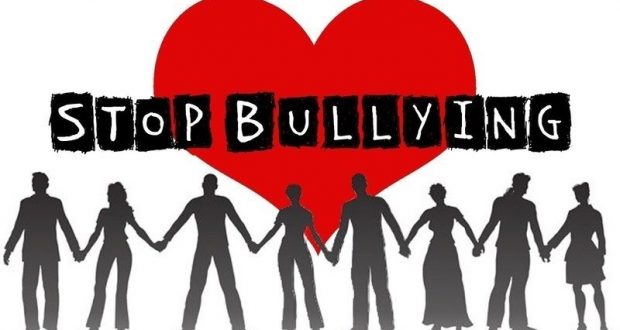By Edward Henderson | California Black Media
On February 16, 2022, a Black student in the Santa Barbara Unified School District was assaulted by Latino students. His attackers called him the n-word and kneeled on his neck while repeatedly, chanting the name “George Floyd.” A district-wide acknowledgment of the hate crime was not sent out until Feb. 22, of that year.
Despite the psychological trauma this student experienced, the school did little to provide him with mental health support. This is despite Assembly Bill (AB) 1145, the Child Abuse and Neglect Reporting Act, a state law that provides specific instructions for schools to follow in such incidents.
Connie Alexander-Boaitey, President of the Santa Barbara branch of the NAACP, says against African Americans are often minimized in her city due to their representation as the smallest demographic group.
“Oh, there’s “not that many,’” Alexander-Boaitey says, referring to a common response when hate crimes are reported or when people complain about racism. “But ‘not that many’ are still being harmed.
Alexander-Boaitey was speaking during a news briefing hosted by Ethnic Media Services on Oct. 27 on school bullying. She was joined on the panel by Becky L. Monroe, the Deputy Director of Strategic Initiatives and External Affairs at the California Civil Rights Department (CRD); Dashka Slater, an award-winning journalist and author who has written books about children who are victims of bullying; Mina Fedor, a young AAPI activist who was honored by President Biden for her efforts to address racism, Xenophobia, and hate in her community; and Barbra Risling, another young activist and member of the Hoopa Valley Tribe as well as a Descendant of the Karuk and Yurok Tribes.
Alexander-Boaitey says the hate crimes and hate incidents, including bullying and cyberbullying, affecting children are all connected to “generational pain” for Black Americans.
Among schoolchildren, “It’s the pervasive calling of the n-word to Black, African American students by young Latino students,” she said. “It’s every day. Its weekly.”
Another Black family in Santa Barbara now walks their child to school to protect her from bullying classmates. And one has pulled their daughter out of the school system completely, opting for home schooling.
To address the problem, the Santa Barbara Unified School District commissioned a survey titled “2023 Anti-Blackness and Racial Climate Assessment and Analysis” that proposed a set of recommendations for addressing the problem.
The hate incidents targeting African American children are not confined to Santa Barbara but are increasing across California, according to the NAACP. These incidents, often involving physical violence and verbal abuse, are more frequent as Black families relocate to predominantly Latino neighborhoods.
In Santa Barbara, African Americans make up only 2% of the population but they account for the most victims of bullying and hate crimes in the area. At 47.5%, Latinos make up the majority of Santa Barbara’s population followed by Whites at 43.5%. According to the local NAACP branch, most of the perpetrators of the bullying and hate crimes are Latino children.
Alexander-Boaitey says she believes the hate incidents are rooted in historic racism and connected to a general desire to make Black people invisible.
“That somehow or another in an effort to move towards more White- facing or White upstanding, one group has said this group doesn’t need to be here so we can be more approximate to what is White. That’s what’s really happening in our schools,” says Alexander-Boaitey.
According to Dashka Slater, author of ‘Accountable: The True Story of a Racist Social Media Account and the Teenagers Whose Lives It Changed’, three in four American young people ages 15 to 25 have run into extremist content online. One in four students between the ages of four and 18 have seen hate or words or symbols written in their schools. About 1.3 million students were bullied because of some aspect of their identity during the 2018-2019 school year, according to a US Government Accountability Office report on schools. Half of those children were targeted because of their race.
“Some forms of bullying are in fact acts of hate,” said Monroe. “Some acts of hate are crimes, while others are violations of civil rights laws. Some may be lawful but incredibly harmful, nonetheless. We must recognize the civil rights issues at the heart of this discussion around bullying.”
Monroe also spoke about the state law requiring schools to provide all students with a safe environment free of harassment.
“Schools have a legal obligation to ensure that students are not denied opportunities, treated differently, discriminated against, or harassed because of their race, color, national origin, gender, gender identity, sexual orientation, religion, or disability,” she said.
“Students who are doing the bullying are following the lead of a biased peer and imitating things that they see on social media,” said Slater. “We also see kids of color who are harassed for their identity and harassing somebody else for their identity. Studies show that kids who are the bully and bullied are the ones who have the longest lasting effects afterward.”
Studies have also shown that students who perpetuate racially motivated bullying onto their fellow classmates don’t necessarily ascribe to racist ideologies but have simply fallen into the trap of influence from outside sources online or mirroring behavior from their parents or guardians at home.
Alexander-Boaitey says Black and Latino leaders and residents from the area have not formally met yet to resolve tensions brewing between their communities.
“I know this is where the struggle really is,” she added. “How do we have leaders from the Black, Latino, and Hispanic communities sit down and have our own conversations? What makes it not happen is erasure culture that says we don’t need to talk about it, or it was a single incident.”
Some parents of California students are pushing back against ethnic studies requirements brought to schools to combat hate and ignorance.
“Parents are trying to take their kids out of the classes,” Alexander-Boaitey continued. “The bill (Assembly Bill (AB)101) does not go deep enough to fight against it. We need to start this at TK. We are way too late by the time we get to high school for this.”
Monroe says the state provides various resources and care coordination for victims of hate crimes or hate incidents.
To report hate incidents or crimes in California, victims or witnesses can file them online here. They can also call 833-8-NO-HATE; (833) 866- 4283 Monday – Friday from 9:00 am – 6:00 pm. If outside of those hours, they can leave a voicemail, or you can call 211 to report hate and seek support.
This California Black Media report was supported in whole or in part by funding provided by the State of California, administered by the California State Library.
 Westside Story Newspaper – Online The News of The Empire – Sharing the Quest for Excellence
Westside Story Newspaper – Online The News of The Empire – Sharing the Quest for Excellence





